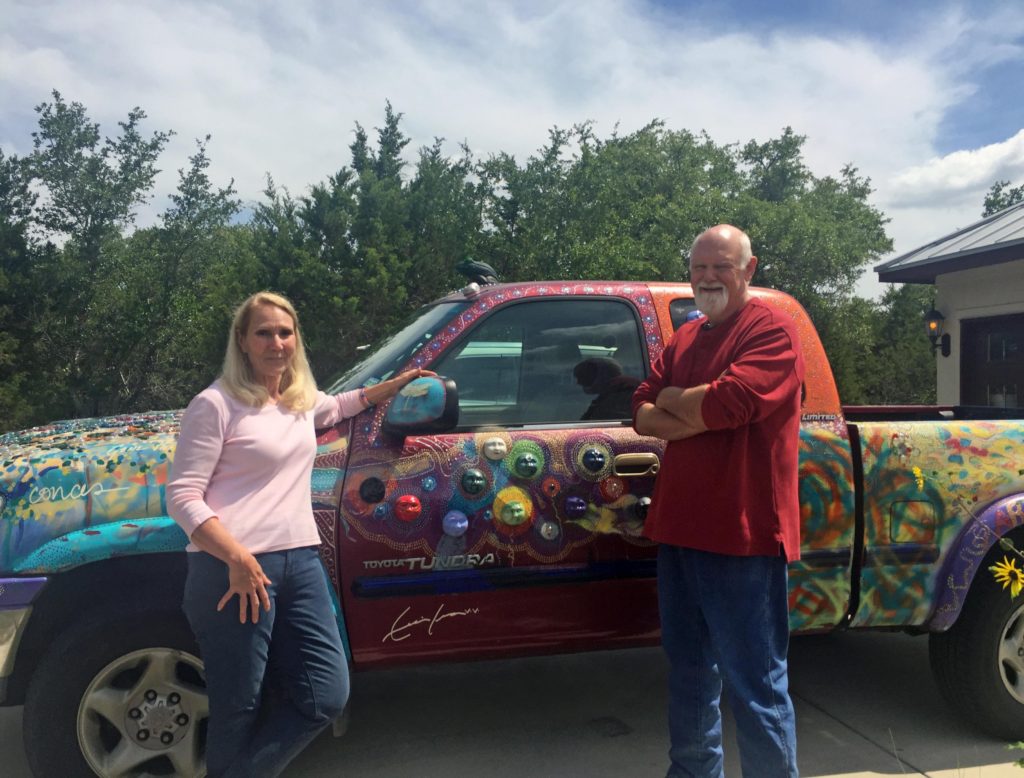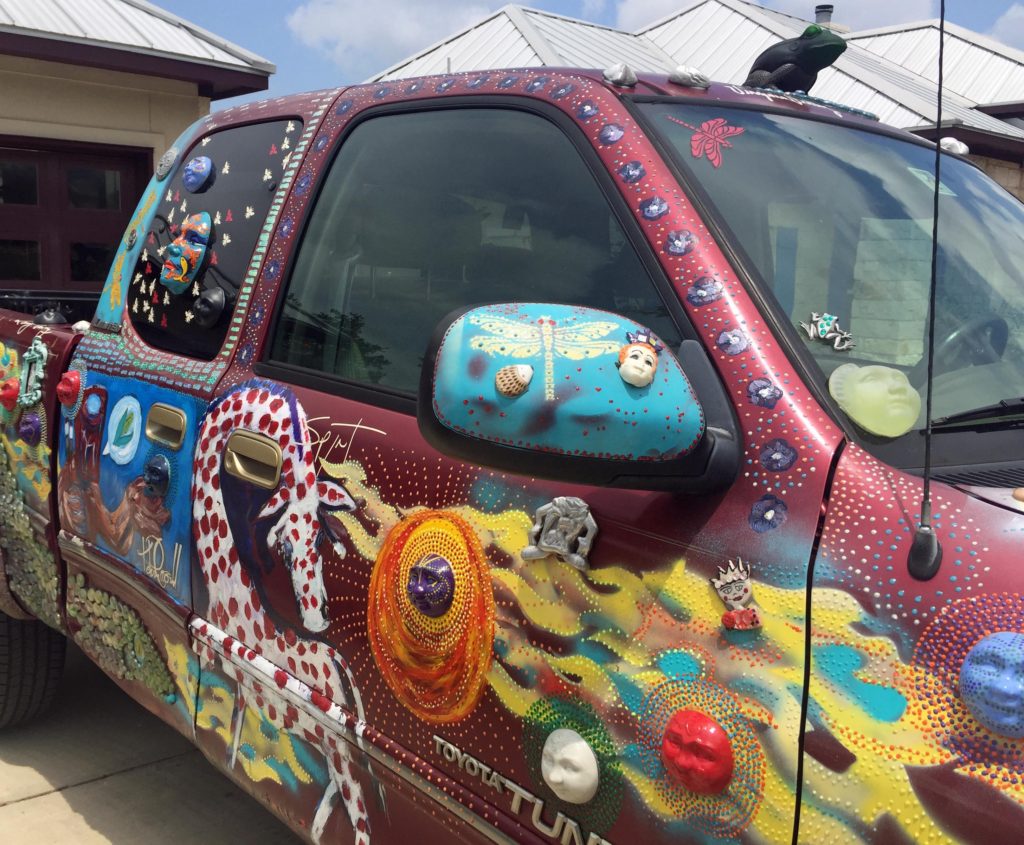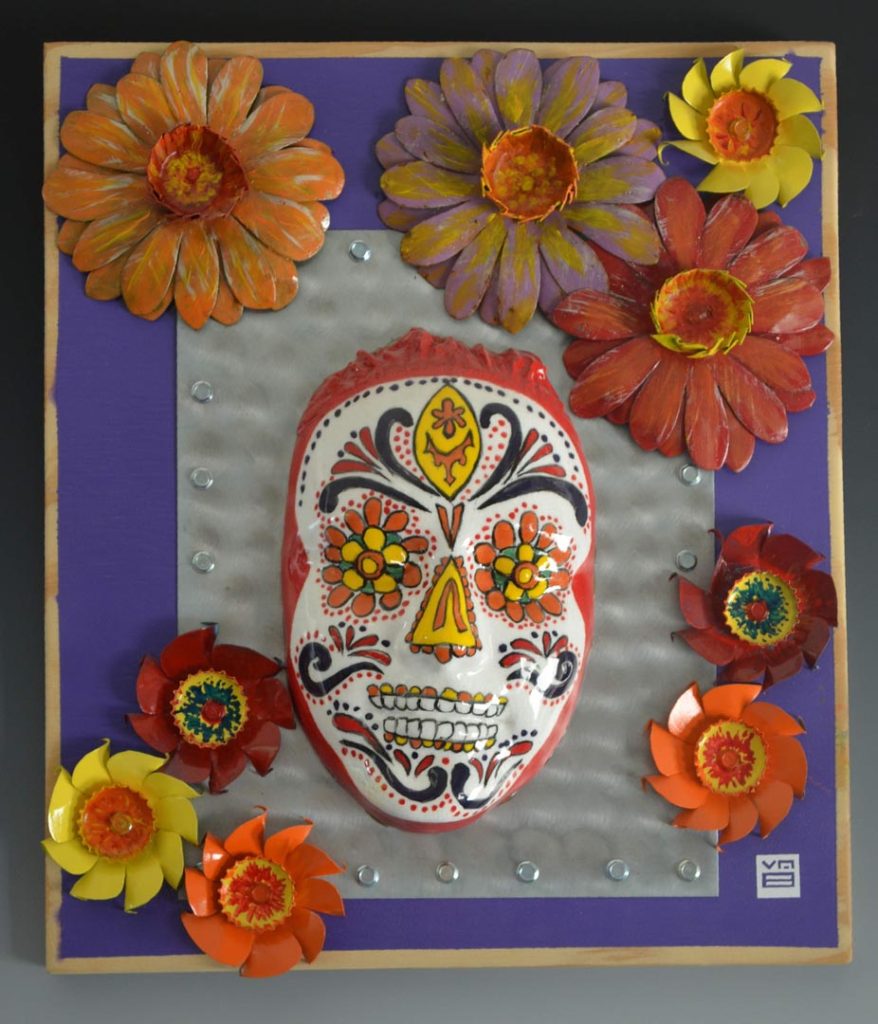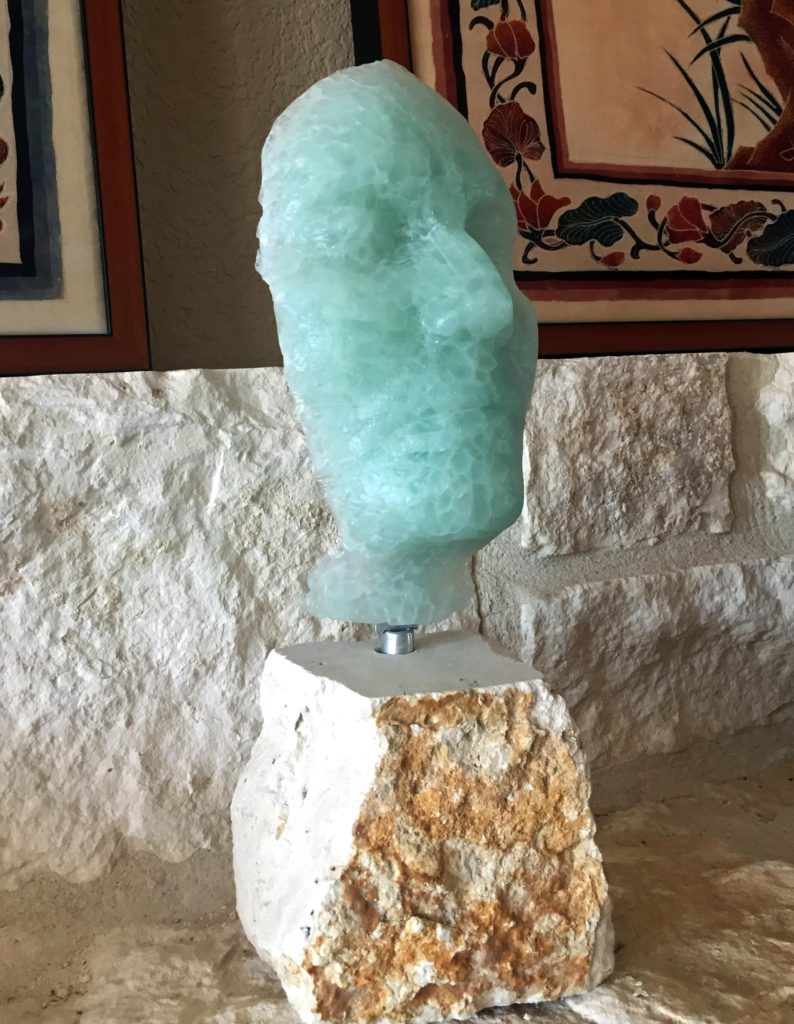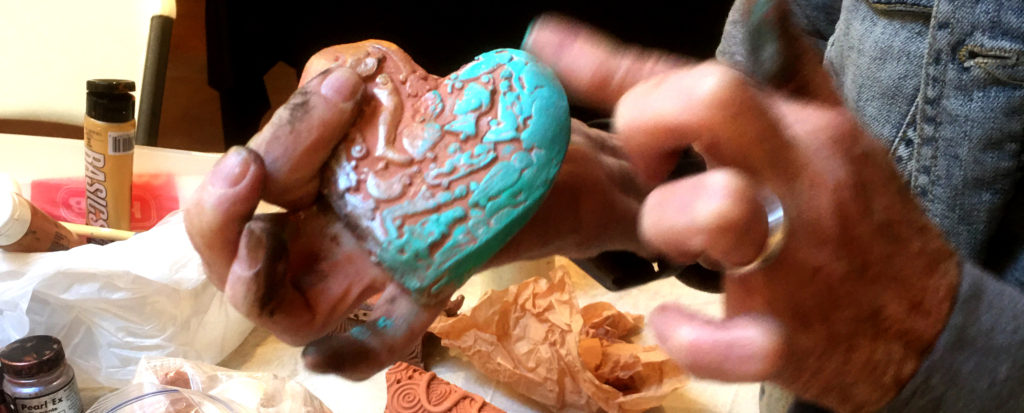
We finished the second part of the “spirit critter” workshop today at the Art League – beautifying our creations.
Leslie Newton did a very skillful job of loading and firing the kiln between last week’s session and this one. Not one ear or tail was lost.
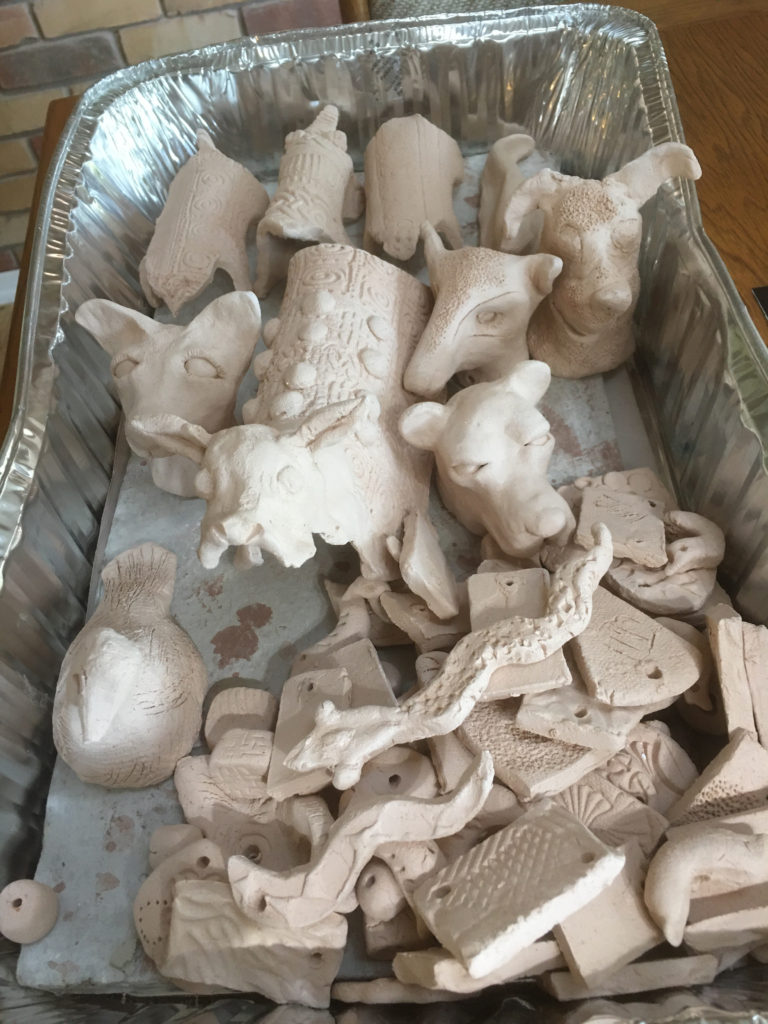
Pan of fired nekkid critters
Today I got to teach some cold finish techniques for the workshoppers to experiment with on the test pieces and the animals. Cold finishes (or post-fire finishes) are amazingly versatile as long as the piece is not going to be used as a functional item – like a mug.
Potters are discovering things like walnut ink (yeah, my old favorite) and wax embedded with metallic particles. Here are some sample pieces that I used today to demo and test various combinations of walnut ink and metallic wax..
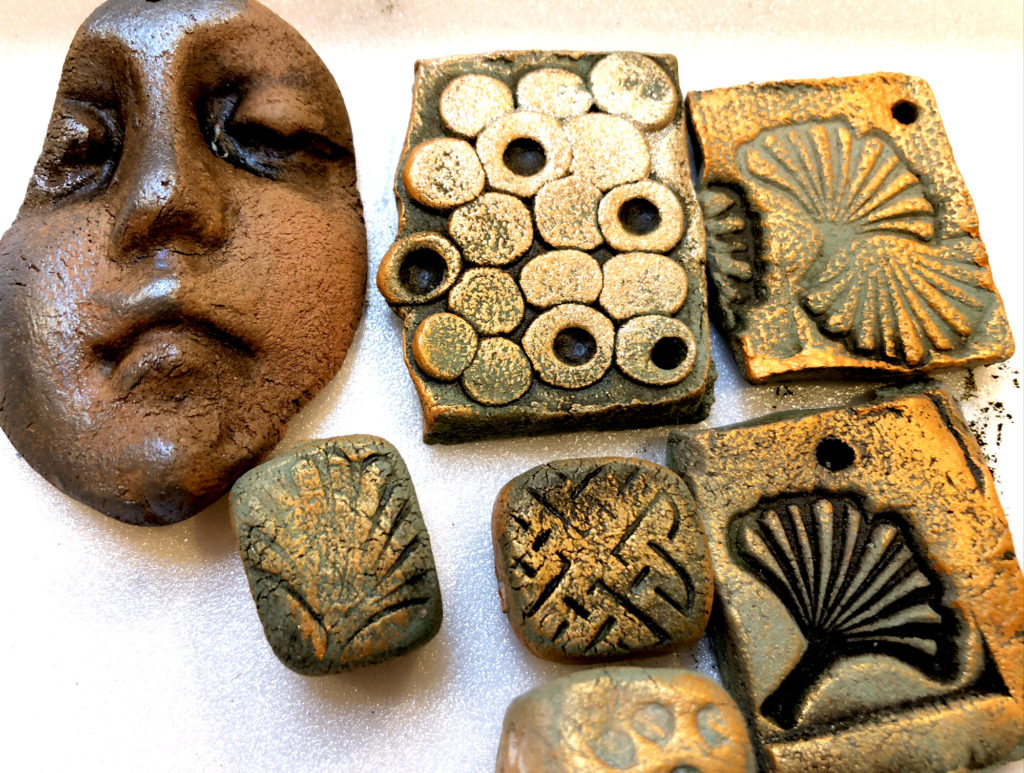
And here are some that were made by Jill Wilson, one of our participants, that show lots of possibilities.
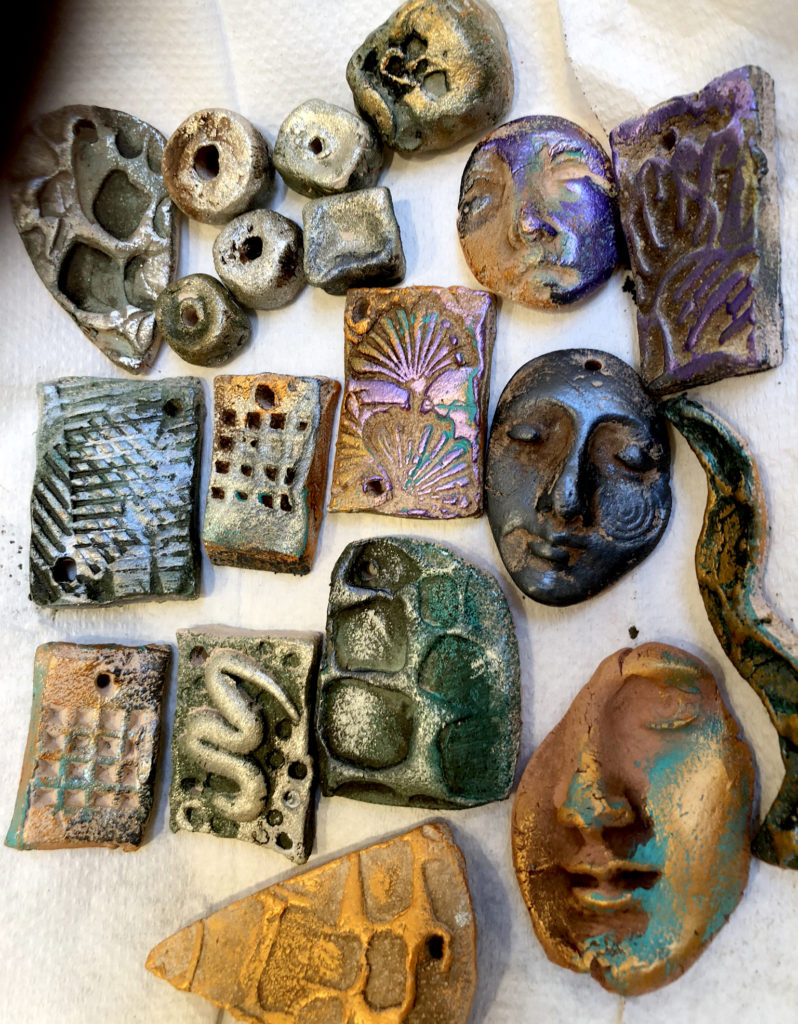
When it came time to put finishes on the animals, a lot of participants liked the idea of the simplicity of just using walnut ink to bring out the texture. Here’s an example – this little guy is almost Pre-Colombian looking – very minimalist and whimsical.
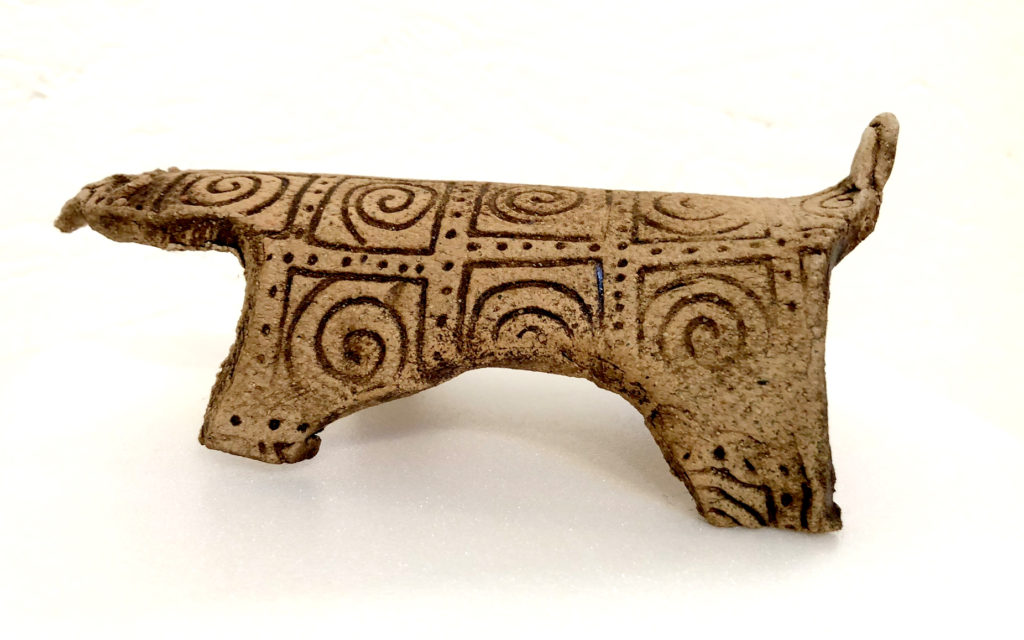
By contrast, this piece has layer upon layer of metallic wax and walnut ink which gives it the look of cast bronze.
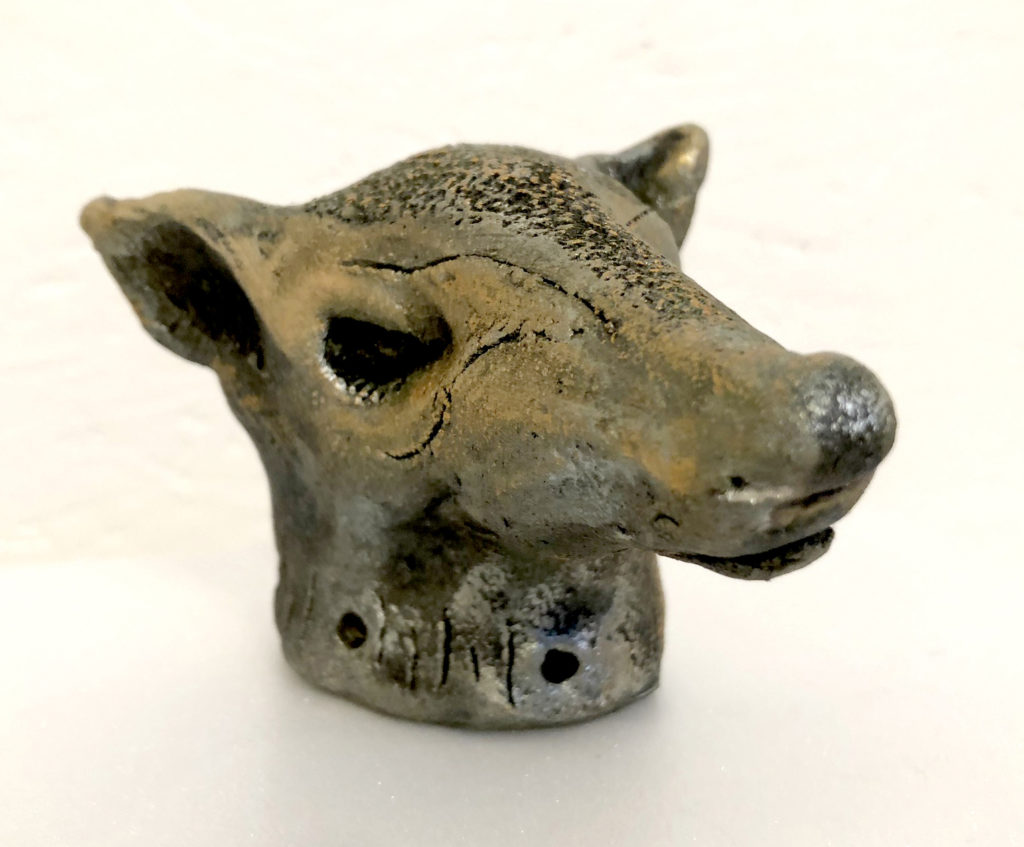
This is an example of a cold finish formula that I demonstrated today – there are a thousand variations:
- Spray the bisque-fired clay liberally with Java walnut ink and let it sit for five or ten seconds.
- Blot the ink with a shop cloth, then dip one corner of the cloth in water and wipe away the color on the surface, leaving the ink in the contours.
- With your finger, add a layer of silver Inka Gold metallic finish.
- When that is even, burnish it with a cloth, then add another partial layer of blue Inka Gold, being random and leaving spots uncovered.
- Add another random layer, this one gold, and blend in with the blue as you go.
- Rub on a bit of Jacquard powder in Interference Blue. This will give you a raku-like finish.
If you want to see the whole process, click on the links below to see how the animals were created, start to finish:
DAY ONE – BUILDING THE ANIMALS

DAY TWO- COLD FINISHES AND COMPLETION
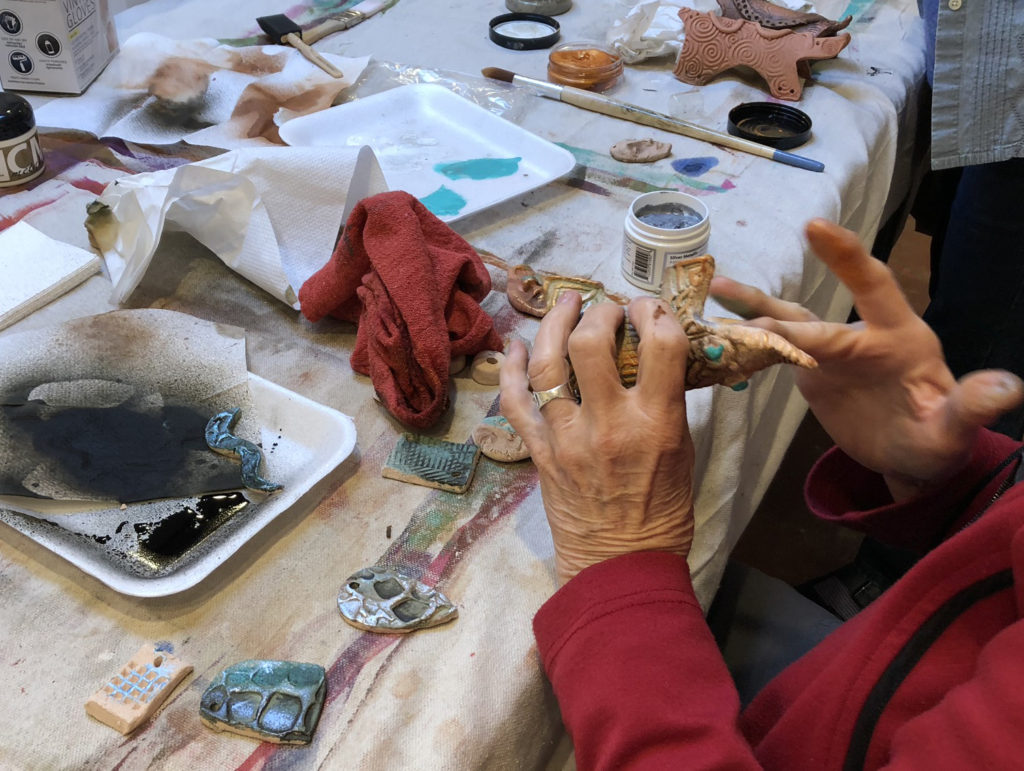
Many thanks to the participants – Jill Wilson, Lisa Stamper Meyer, Vera Smith, Becky Hadley, Kimberly Anderson – and especially to my co-teacher, Leslie Newton!
Let’s do it again next year!


